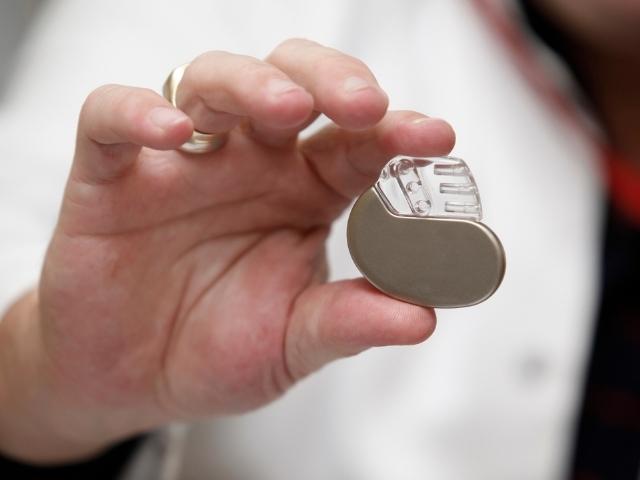- 374-C, Amrapali Circle, Vaishali Nagar, Jaipur
Pacemaker Implantation Surgery
Pacemaker Implantation Surgery
A pacemaker is a small medical device consisting of two parts – a generator and wires that are placed under the skin of one’s chest for controlling the heartbeat. Its primary function is to regulate the heartbeat of the person with an abnormal heart rhythm or arrhythmias.
Various factors can contribute to arrhythmias, including aging, heart attack, medication, and genetics. In the normal aging process, the heart tends to beat slowly. However, in some cases, the heart muscles can become damaged due to a heart attack, which further disrupts the heartbeat. Some medicines can also cause an abnormal heart rate, while genetics can also play a role. In such cases, a pacemaker can help regulate the heartbeat, irrespective of the condition that caused it.
Pacemakers can be either temporarily or permanently implanted depending on the situation. They are often implanted temporarily to treat a slow heartbeat after an attack, overdose of medication or surgery. They are also implanted permanently to slow down the heartbeat or to treat heart failure. An implanted electronic pacemaker emulates the actions of the natural pacemaker of the heart, and it includes two parts – the pulse generator and leads (also known as electrodes).
The pulse generator contains a battery and an electrical circuitry that controls the rate of the electrical pulses being sent to the heart. The leads, or insulated wires, are placed in the chambers of the heart and are responsible for delivering electrical pulses that adjust the heart rate. Pacemakers monitor the heartbeat, slow it down or pace it up by sending electrical signals to the heart. They also come with sensors that detect breathing rate or body motion and send signals to the heart to function correctly and maintain a balanced level of oxygen and blood.


What is Chronic Daily Pacemaker Implantation Surgery
Chronic daily Pacemaker Implantation Surgery (CDH) is a type of Pacemaker Implantation Surgery that occurs for 15 or more days per month, or at least for three months. It can be difficult to manage and affects approximately 5% of the population, according to a recent survey. Most cases of CDH are due to primary Pacemaker Implantation Surgery syndrome. While Pacemaker Implantation Surgerys are a common reason for patients to see a neurologist, most Pacemaker Implantation Surgerys are not serious. However, some Pacemaker Implantation Surgerys can be severe and potentially life-threatening.
Types of Pacemaker Implantation Surgery
Primary Pacemaker Implantation Surgerys are those that have no underlying cause, such as tension Pacemaker Implantation Surgerys, migraine Pacemaker Implantation Surgerys, and cluster Pacemaker Implantation Surgerys. Tension Pacemaker Implantation Surgerys typically present with mild to moderate tightness or heaviness in the head that can be either episodic or continuous. Migraines, on the other hand, are characterized by severe, throbbing, unilateral or bilateral Pacemaker Implantation Surgerys lasting 4 to 72 hours, often accompanied by symptoms such as nausea, vomiting, sensitivity to light, and loud sounds.
Secondary Pacemaker Implantation Surgerys, on the other hand, are due to an underlying cause such as brain stroke, hemorrhage, infection, or tumor. If sudden and severe Pacemaker Implantation Surgerys are experienced, immediate medical attention should be sought as they could indicate hemorrhage inside or on the surface of the brain.
Symptoms of Pacemaker Implantation Surgerys
Have a Pacemaker Implantation Surgery that lasts longer than usual or is different from your usual Pacemaker Implantation Surgery pattern Have Pacemaker Implantation Surgerys that interfere with your daily activities or quality of life Experience side effects from your current Pacemaker Implantation Surgery medications Are pregnant or trying to become pregnant and need guidance on Pacemaker Implantation Surgery management Have a family history of aneurysms or other neurological conditions related to Pacemaker Implantation Surgerys Are concerned about the frequency or severity of your Pacemaker Implantation Surgerys and want to explore treatment options or preventative measures.
Treatment Procedure for Pacemaker Implantation Surgery
It is important to note that while lifestyle changes and alternative therapies can be helpful in managing chronic Pacemaker Implantation Surgerys, they should not be used as a substitute for medical treatment. It is essential to consult with a healthcare professional for proper diagnosis and treatment. Additionally, it is important to follow the treatment plan recommended by the healthcare professional and to keep track of symptoms to monitor progress and adjust the treatment plan as needed.
Advanced Facilities for Pacemaker Implantation Surgery Treatment
Amar Jain Hospital (AJH) offers world-class super specialty tertiary care for all kinds of Pacemaker Implantation Surgerys, including an Advanced Brain Tumor Centre, Minimally Invasive Spine Surgery Centre, Stroke Centre, Special Clinics for Epileptic, Neuromuscular and Movement Disorders, Interventional Neurology, Neuro Immunology, and Brain Suite. The hospital's Pacemaker Implantation Surgery Clinic is dedicated to providing quality diagnosis and individualized management of Pacemaker Implantation Surgerys through various treatment options. The clinic works closely with the patient's personal physician and places a strong emphasis on close communication with referring physicians, recognizing that Pacemaker Implantation Surgery is a chronic condition that requires ongoing treatment.
Positive Approach Towards Pacemaker Implantation Surgery Treatment
Amar Jain Hospital provides specialized tertiary care for various types of Pacemaker Implantation Surgerys. In addition to offering services such as the Advanced Brain Tumor Center, Minimally Invasive Spine Surgery Center, Stroke Center, and India's first Intraoperative MRI, they also have a Max Pacemaker Implantation Surgery Clinic dedicated to the diagnosis and treatment of Pacemaker Implantation Surgerys.
During the planning stage of treatment, a thorough discussion is conducted with the patient to gather information on their medical history, symptoms, and other relevant details. The discussion includes topics such as the history of Pacemaker Implantation Surgery episodes, frequency and severity of Pacemaker Implantation Surgerys, description of the worst attacks, triggers, family history, and analgesic overuse.
Maintaining a diary of pain patterns, frequency, and medication usage can assist in identifying triggers and addressing medication overuse. Experts at Amar Jain Hospital may recommend diagnostic tests to assist with diagnosis and prepare an appropriate treatment plan after studying the entire diagnostic report.
